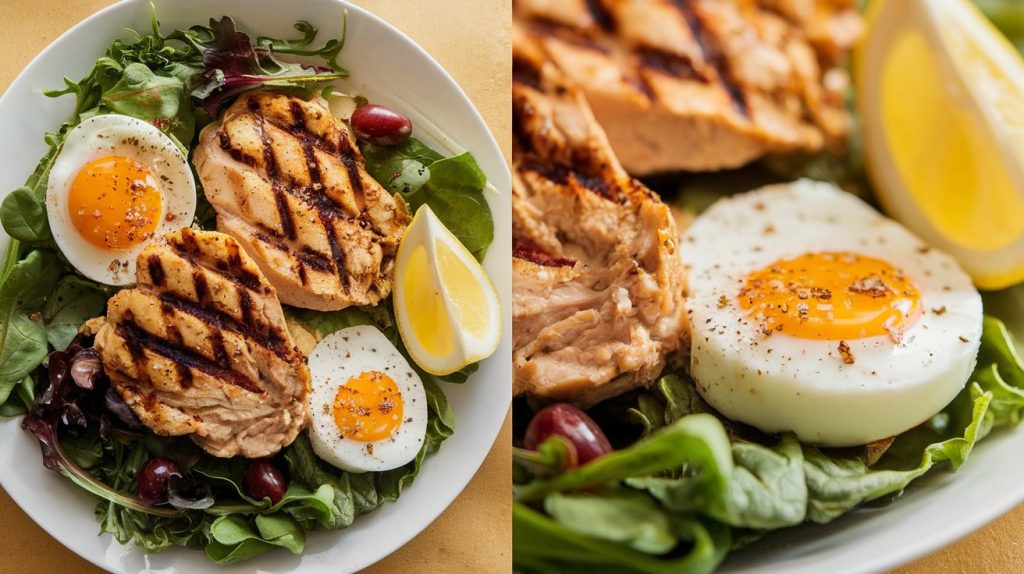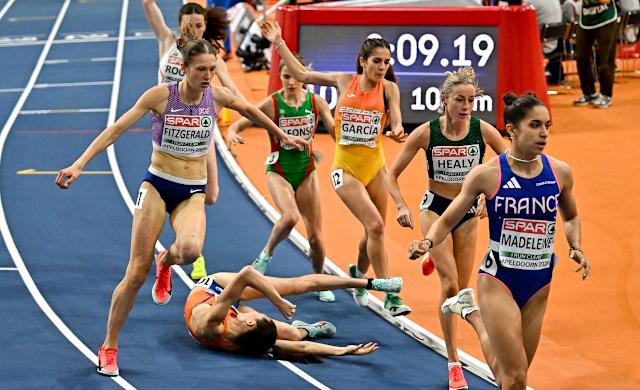Proteins are the building blocks of life, forming the cornerstone of muscle growth, repair, and overall vitality. Renowned sports personalities and fitness icons like Virat Kohli, Suniel Shetty, and Neeraj Chopra have consistently emphasized the pivotal role of proteins in their diets. A recent viral thread by fitness coach Abhi Rajput provides practical insights on incorporating protein-rich foods into daily meals, shedding light on the disciplined dietary practices of these icons.
Why Protein Is a Non-Negotiable Nutrient
Protein is vital for cellular repair, muscle development, and energy maintenance. It also plays a crucial role in satiety, aiding fat loss by reducing cravings. Abhi Rajput explains, “Think of protein as the fuel for your body—it’s non-negotiable.” Proteins help bridge the gap between fitness aspirations and achievements, from improving stamina to enhancing recovery.
The Protein Practices of Icons
- Virat Kohli: The cricketing maestro follows a meticulously planned diet rich in lean proteins like tofu, paneer, and plant-based alternatives. He balances this with plenty of greens, ensuring his meals are as nutritious as they are simple.
- Suniel Shetty: Known for his ageless physique, Shetty meticulously quantifies his protein intake. He combines it with fiber-rich greens to maintain a balanced diet.
- Neeraj Chopra: The Olympic gold medalist incorporates a variety of protein sources such as chicken, fish, eggs, and paneer, highlighting the importance of diversity in protein consumption.

High-Protein Indian Foods You Can Add to Your Diet
The secret to enhancing protein intake lies in everyday Indian staples. Here are some practical options to emulate these fitness icons:
Dals and Lentils
Lentils like moong, masoor, and urad dal are powerhouses of protein. A single cup of cooked dal can provide approximately 15 grams of protein. Pairing it with whole grains like brown rice or quinoa increases its nutritional profile.
Paneer and Tofu
Paneer and tofu are excellent vegetarian protein options. A 100-gram serving of paneer offers around 18 grams of protein, while tofu is an excellent low-calorie alternative for those looking to cut fat.
Eggs
One of the most versatile and affordable sources of protein, eggs contain about 6 grams of protein each. Include boiled eggs for breakfast or add them to salads for a quick protein boost.
Chicken and Fish
Lean meats like chicken breast and fish such as salmon and mackerel are rich in high-quality protein. These are staples in Neeraj Chopra’s diet, contributing to muscle repair and overall energy.
Sattu
Sattu, a roasted gram flour, is a traditional high-protein ingredient in many Indian households. Mixing it with water or milk creates a quick and nutritious drink.
Strategies to Simplify Protein-Rich Meal
One of the key takeaways from Abhi Rajput’s thread is the importance of keeping meals simple yet balanced. Here’s how you can incorporate these practices:
- Plan Around Protein
Build each meal with a protein source as the centerpiece. Whether it’s lentils, eggs, or meat, ensure that the rest of the plate complements the protein content with carbs and fibers. - Quantify Your Intake
Use apps or consult a dietician to measure how much protein your body requires daily. Suniel Shetty’s approach of counting grams ensures his meals align perfectly with his fitness goals. - Focus on Digestion
Proteins are only effective if your body can digest and absorb them efficiently. Pair high-protein foods with digestion-friendly options like ginger or probiotics to maximize nutrient uptake. - Leverage Snacks
Incorporate protein-rich snacks like Greek yogurt, nuts, and protein bars between meals to maintain energy levels and curb hunger.
The Science Behind High-Protein Diets
High-protein diets are scientifically proven to aid in fat loss, muscle building, and recovery. Here’s how:
- Satiety
Proteins take longer to digest, keeping you full for longer and reducing unnecessary snacking. - Thermic Effect
The body uses more energy to digest protein compared to fats and carbohydrates, contributing to a higher metabolic rate. - Muscle Preservation
During weight loss, a high-protein diet helps preserve lean muscle mass, ensuring the weight lost is primarily fat.
Practical Tips to Stay on Track
Adopting a high-protein diet doesn’t mean overhauling your lifestyle overnight. Here are some actionable tips:
- Start Small: Replace one carb-heavy meal with a protein-rich alternative.
- Meal Prep: Cook in batches and store meals to avoid unhealthy last-minute choices.
- Hydrate: Protein digestion requires water, so ensure you’re adequately hydrated.
- Mix It Up: Rotate between different protein sources to prevent boredom and nutritional gaps.
Conclusion: Discipline Is the Game-Changer
Virat Kohli’s unmatched discipline and Suniel Shetty’s quantified approach underscore the importance of consistency and planning. Whether you are an athlete or someone looking to improve overall health, prioritizing protein can transform your fitness journey. Follow the practical strategies outlined above, and you’ll be on your way to achieving a healthier, stronger body. Know more: https://timesofindia.indiatimes.com/life-style/health-fitness/health-news/fitness-expert-explains-why-protein-matters-and-how-it-can-be-a-part-of-regular-diet-routine/articleshow/115802027.cms



 By
By








 By
By








